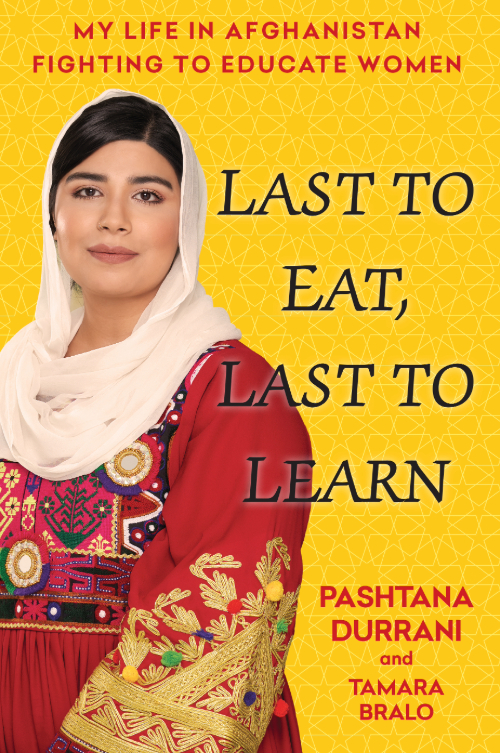 With a collection of government stamps in hand, I now needed to secure the tribal backing for the project. Government approval merely made my NGO official, but without the tribal endorsement, my effort to educate girls would be just another import with a short shelf life.
With a collection of government stamps in hand, I now needed to secure the tribal backing for the project. Government approval merely made my NGO official, but without the tribal endorsement, my effort to educate girls would be just another import with a short shelf life.Community involvement was the only way to ensure a lasting change. Tribal life was the only constant in our lives for centuries and, if approached the right way, it didn’t have to stand in opposition to progress nor modernity. Being a closed system, it simply required a change from within, a change that was a result of reckoning, not dictated or imposed. I thought I was well-placed to start the ball rolling. I belonged to the tribal system; I wasn’t an outsider trying to prove it wrong. If anything, I wanted to prove that the outside world was wrong about us and challenge the perception that rural areas are populated with people who stayed illiterate by choice. I knew firsthand that wasn’t true. They wanted to learn. They didn’t lack the will; they lacked the way.
Trailing my father to tribal meetings my entire childhood came in handy. I could easily get access to the leaders. I didn’t know what to expect, but cockily, I thought I’d be ready for whatever questions come my way.
I went to see a tribal leader deep in the Kandahar Province as a litmus test. He received me at his home, and if he was uncertain about the purpose of my visit, he didn’t show it. This wrinkled, bearded man sitting across from me was probably the only person within a ten-mile radius who could read or write.
I was nervous for the first time. Ministry meetings made me defiant and angry; it was easy enough to forget about being nervous. Here, however, there was none of it. No hostility, nothing to get angry about. The stakes felt higher. My palms started sweating.
Tea was served, we exchanged pleasantries. I’m always proud when I manage not to anger anyone early in a conversation, so I saw that as a positive sign. I answered all his questions about my father’s well-being at length, and then I explained why I was there. “I know there is no girls' school in your village and there is no way for girls to get an education.” He nodded.
“I head an NGO”—saying those words out loud still felt strange—“and the idea is to make basic education available on tablets. I would like to use them here, in Kandahar Province. That way, girls could get an education even if they’re not able to go to school.”
I explained that none of it was imminent; I was still waiting for the tablets to be delivered. But when they were ready, I would like to distribute them in his village. From there, I launched into explaining the technical aspect of it all. “The tablets are solar-powered, and you don’t need the internet. Everything girls need is on the tablet already!” Over and over, I kept highlighting the ease of use.
I smiled as I finished with my presentation, ever so pleased with myself and my little speech. I thought it went well. It was clear and simple, informative without being condescending.
After a few seconds of silence, he asked a single question: “Why would girls need to be educated at all?”
With that, my smugness was gone.
The question wasn’t a loaded one. It was simple, to the point, and relevant to the conversation. I could feel my face turning red with embarrassment and felt a sudden desire to hide. The flight response was due to the horrifying realization that I didn’t know how to answer his question. To me, educating girls was about empowering them, but I knew very well that was not the argument I should offer to him. In his eyes, empowering girls was only half the answer and the less important half at that. It’s what Western organizations kept getting wrong about Afghanistan. We live and breathe as a community. Individuality matters less here than in the West. Advocating for special groups is often seen as somehow less holistic, as missing the point. It’s only half a pitch. If you’re changing the fabric of society, you need to prove that it’s for the good of the entire community. Here, the communal good reigns supreme.
I understood exactly what he meant when he asked the question, but I wasn’t entirely sure how to frame my arguments in response. My pitch, the one that I was so proud of until a few minutes ago, was worse than the government proposals. At least the government came armed with the tangible benefit of bribes. I had nothing. I came to the fight unable to defend the very premise. I didn’t even know how to defend education itself, not for girls, not for boys. The need for it was drummed into me, first by my own family, then by the school. It was not something I ever had to formulate before. I knew instinctively that education was necessary, but knowing something instinctively is a poor starting point in a debate.
The only answers I had at the ready were those offered by my Western education, peddling degrees and advocating along the lines of furthering your career choices, which, seriously, isn’t going to fly in rural Kandahar. I needed to defend getting educated as a concept not as a tool, and present education as a path not as a destination. Years of working toward this conversation, and I still wasn’t sure what to say. I was devastated. How did I miss that?
I faced a choice. I could try to talk my way out of it. I could offer platitudes and generic answers like a kid on an exam she didn’t prepare for. Or I could acknowledge that his question was too important to wing it, admit my failure, go back to the drawing board, and figure out the actual answer. I knew walking away could easily end the conversation altogether; yet insulting him with half-baked answers somehow seemed far worse. Leaving would at least show respect, something that my little speech was apparently sorrily lacking.
I mumbled that I’d get back to him.
It took me two months to prepare the answer. I searched for religious, cultural, and practical arguments. It was my mother who trained me for this moment with her skepticism, with her cross-examination of every decision I’ve ever made in life. Debate clubs have nothing on a Pashtun mother hurling chaplaks at you whenever you get the answer wrong. Chaplaks significantly improve your critical-thinking abilities.
When I finally went back to see him, I quickly skipped over the pleasantries. Yes, my father was still doing well. There was no need to get into it. I was all business. I even cleared my throat before starting. I opened with the religious reasons: “First of all, Islam teaches us that we are meant to learn all our lives. From the cradle to the grave.” I was weaving in quotes from the Quran and the hadiths that I’d memorized as supporting evidence. “Both men and women have the same obligations as Muslims. Women have to pray as often as men, they fast for Ramadan, and they go to Mecca on a pilgrimage, so their obligation to learn is the same as that of men. Offering education to girls would enable them to follow the path they’re supposed to, and fulfill their God-given duty.
“Secondly,” I continued, “women are taking care of families, and the better educated they are, the better they can do that.” There was a story my mother told me a long time ago, about a woman from her family who accidentally poisoned her baby boy by giving him powdered glue instead of formula. The containers looked the same and she didn’t know how to read. Her boy ended up in the hospital for three days. He recovered in the end, but she never got over almost killing her son. Teaching women like her how to read, teaching them the basics of first aid, would help them to manage the household better. “It would keep the families and our community safer.
“Lastly, the more the women know, the more they can teach their children. By educating girls, you’re educating boys, too. These girls will become mothers. And educated mothers can teach their children, both girls and boys. Women are the key to educating the entire family.” I insisted on highlighting the role of a mother for a good reason. The mother is the first and the last woman an Afghan man listens to.
See? All for the benefit of the community.
Having run out of breath, I stopped as abruptly as I started. It didn’t matter, though. We were talking values now. It was content over style. He had enough information to decide.
The old man was hard to read, but I knew he listened closely. He took a painfully long time to react. He offered more tea, then more snacks, while I sat there waiting for him to respond. Maybe I deserved that agony for being unprepared the first time around, but the wait, from where I sat, still seemed unnecessarily cruel.
When he finally called it a “fine idea,” I thought my head would explode.
Improbably, walking away the first time around was the right call. I realized he didn’t see our conversation as a dispute. He wasn’t opposed to educating girls. I wasn’t an enemy; I was a partner. He just needed me to do better.
Pashtana Durrani is an International Scholar-in-Residence at the Wellesley Centers for Women. Her book Last to Eat, Last to Learn: My Life in Afghanistan Fighting to Educate Women, co-authored with Tamara Bralo, will be released on February 20, 2024.



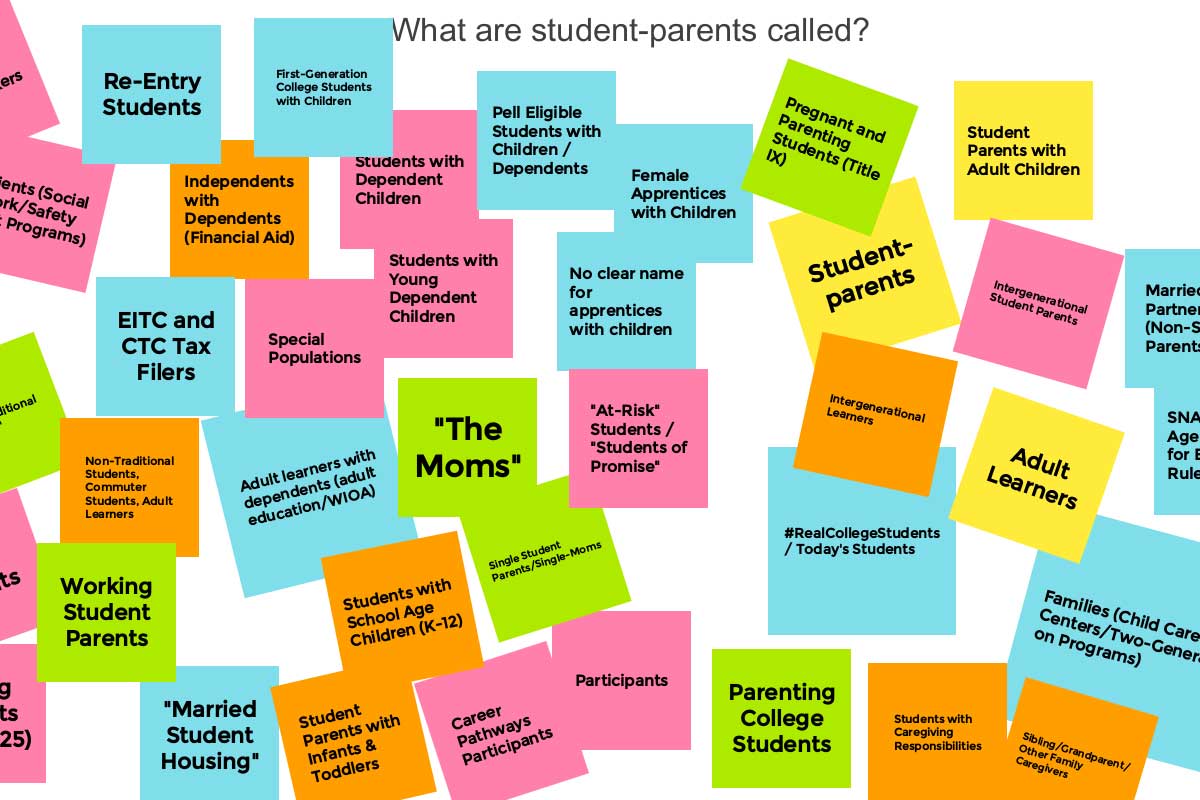
 , Ph.D., is a research scientist at the Wellesley Centers for Women studying
, Ph.D., is a research scientist at the Wellesley Centers for Women studying 
 On March 11, 2021, the House of Representatives passed a bill seeking to “create a special education scheme to support deserving students attending public tertiary institutions across Liberia. The Bill is titled “An Act to Create a Special Education Fund to Support and Sustain the Tuition Free Scheme for the University of Liberia, All Public Universities and Colleges’ Program and the Free WASSCE fess for Ninth and Twelfth Graders in Liberia, or the Weah Education Fund (WEF) for short. The bill when enacted into law, will make all public colleges and universities “tuition-free”. The passage of this bill by the Lower House has been met by mixed reactions across the country: young, old, educated, not educated, stakeholders, parents, teachers among others, have all voiced their opinions about this bill. While some are celebrating this purported huge milestone in the education sector, others are still skeptical that this bill may only increase access but not address the structural challenges within the sector. I join forces with the latter, and in this article, I discuss the quality and access concept in our education sector and why quality is important than access. I recommend urgent action to improve quality for learners in K-12.
On March 11, 2021, the House of Representatives passed a bill seeking to “create a special education scheme to support deserving students attending public tertiary institutions across Liberia. The Bill is titled “An Act to Create a Special Education Fund to Support and Sustain the Tuition Free Scheme for the University of Liberia, All Public Universities and Colleges’ Program and the Free WASSCE fess for Ninth and Twelfth Graders in Liberia, or the Weah Education Fund (WEF) for short. The bill when enacted into law, will make all public colleges and universities “tuition-free”. The passage of this bill by the Lower House has been met by mixed reactions across the country: young, old, educated, not educated, stakeholders, parents, teachers among others, have all voiced their opinions about this bill. While some are celebrating this purported huge milestone in the education sector, others are still skeptical that this bill may only increase access but not address the structural challenges within the sector. I join forces with the latter, and in this article, I discuss the quality and access concept in our education sector and why quality is important than access. I recommend urgent action to improve quality for learners in K-12.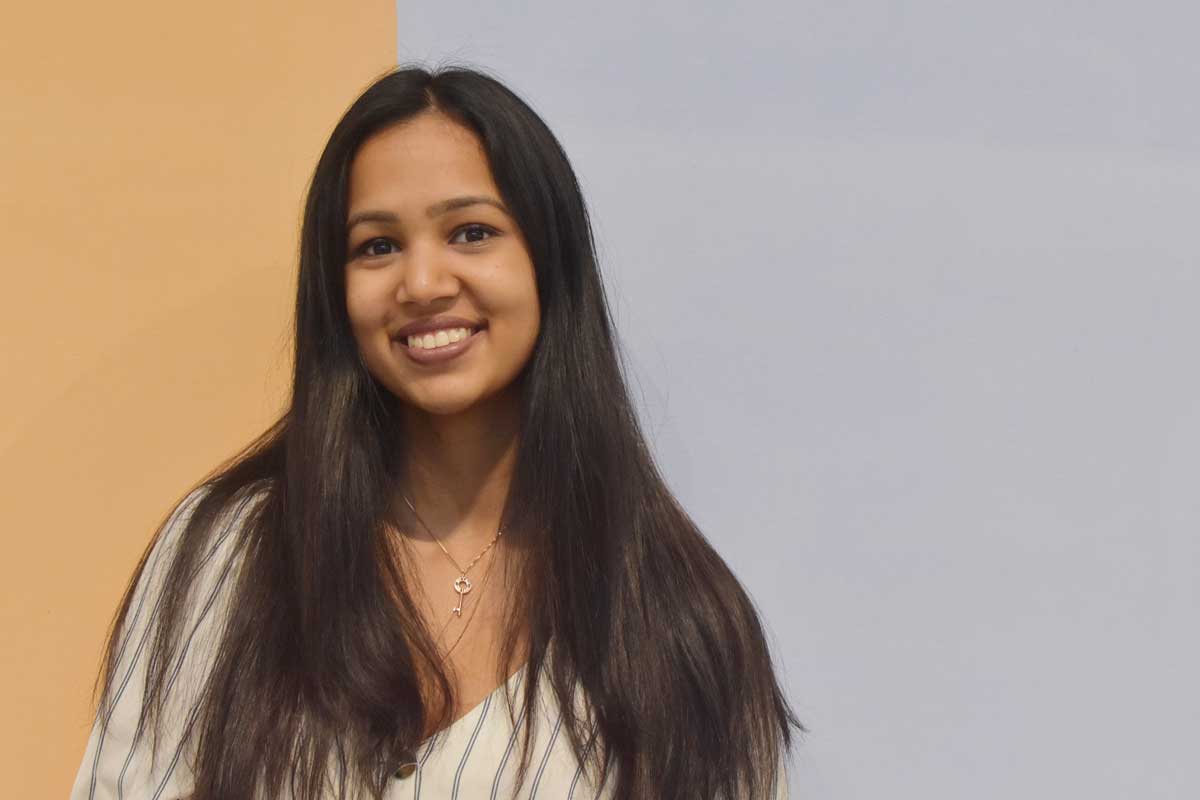 Sage Carson was raped by a graduate student in her sophomore year of college. In an article for
Sage Carson was raped by a graduate student in her sophomore year of college. In an article for 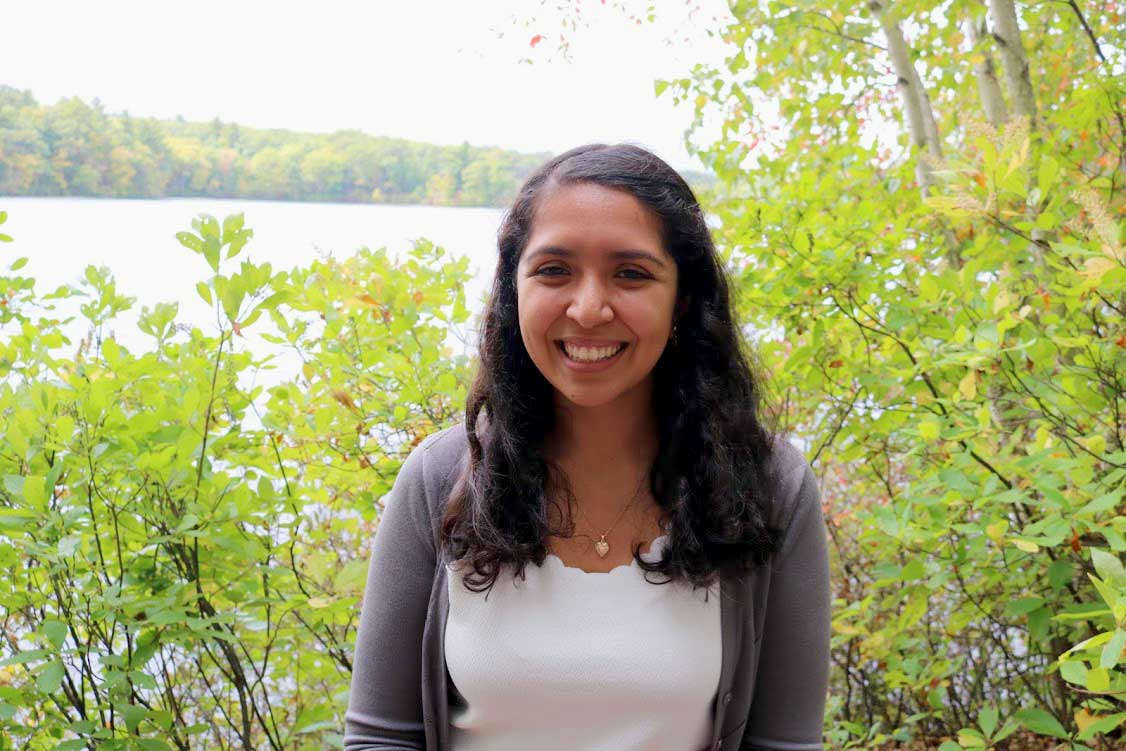 It is the spring of 2020, and my senior year at Wellesley College is not at all what I imagined it would be like. Before concerns about COVID-19 led
It is the spring of 2020, and my senior year at Wellesley College is not at all what I imagined it would be like. Before concerns about COVID-19 led  A recent family conversation reminded me of my (long-ago!) elementary school experience of learning who my teacher would be in the coming school year. I remember the sense of anticipation – who will be my teacher?.
A recent family conversation reminded me of my (long-ago!) elementary school experience of learning who my teacher would be in the coming school year. I remember the sense of anticipation – who will be my teacher?. Yesterday on route to work my phone exploded with messages from friends and colleagues urging me to, "Turn on NPR right now,” to hear their
Yesterday on route to work my phone exploded with messages from friends and colleagues urging me to, "Turn on NPR right now,” to hear their 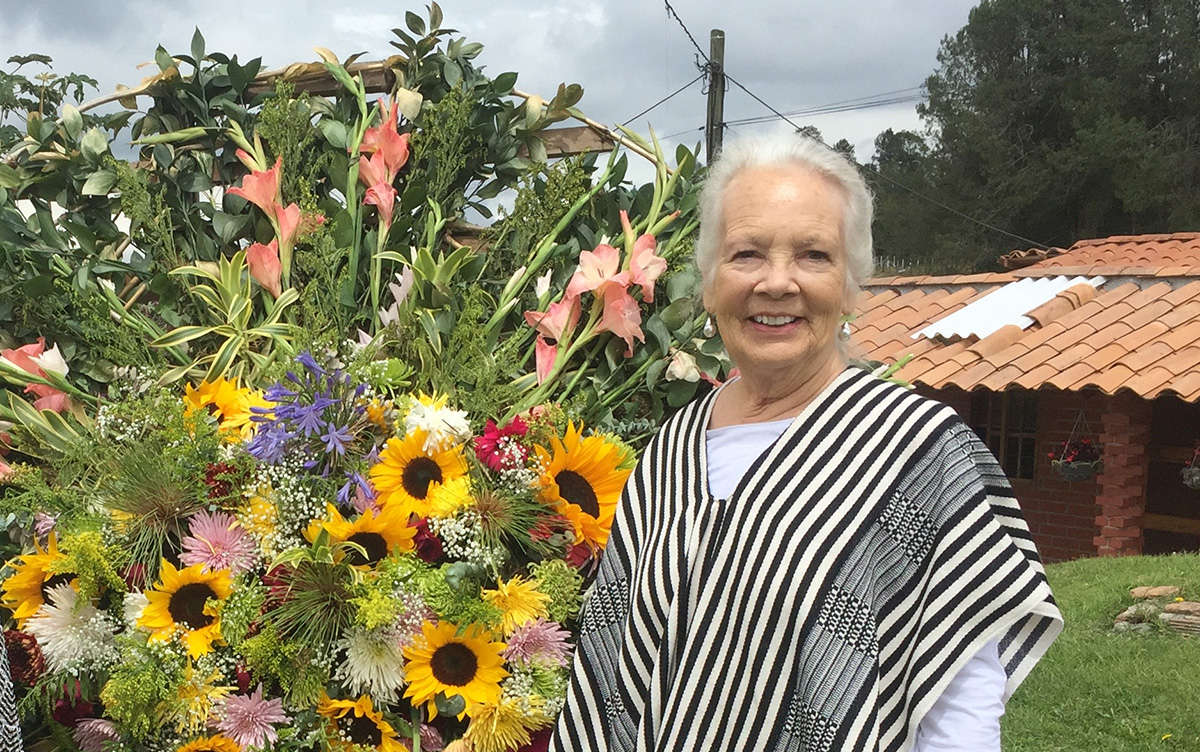 Close to half a century has passed since I lived in
Close to half a century has passed since I lived in 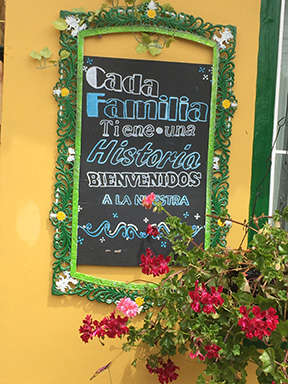 But as much as I believed in my work and as much as I loved Colombia—the food, the people, the mountains, majestic and ever changing as clouds and sun played hide and seek—I realized Amy’s physical and developmental challenges required medical care and educational programs unavailable in Colombia. Amy and I left. I was unsure if I would ever return.
But as much as I believed in my work and as much as I loved Colombia—the food, the people, the mountains, majestic and ever changing as clouds and sun played hide and seek—I realized Amy’s physical and developmental challenges required medical care and educational programs unavailable in Colombia. Amy and I left. I was unsure if I would ever return.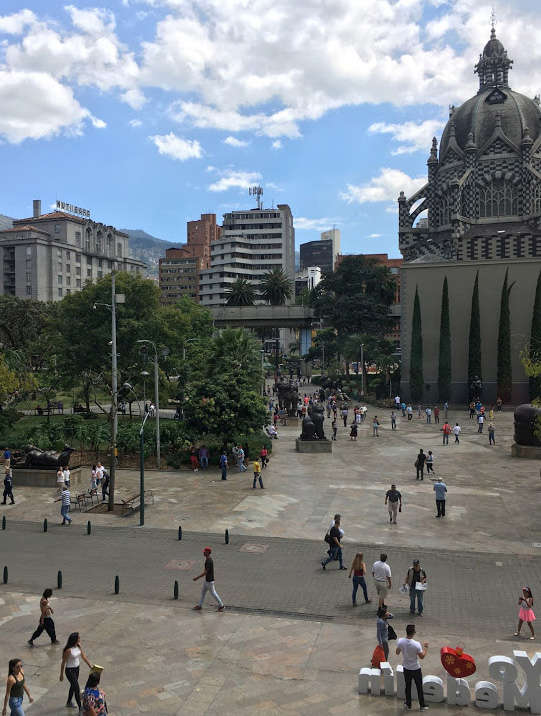 ote for me. One of the bits of information our guide mentioned as we passed a large public school was that schools were now required to teach sex education to students starting in the early grades. Recalling the opposition our sex education project had encountered years before, I asked if the requirement was enforced or merely a regulation on the books. He smiled. “Well, Senora, I can’t speak for the entire country, but certainly in the big cities and towns it is a regular part of the educational program. The law was passed in 1994.”
ote for me. One of the bits of information our guide mentioned as we passed a large public school was that schools were now required to teach sex education to students starting in the early grades. Recalling the opposition our sex education project had encountered years before, I asked if the requirement was enforced or merely a regulation on the books. He smiled. “Well, Senora, I can’t speak for the entire country, but certainly in the big cities and towns it is a regular part of the educational program. The law was passed in 1994.”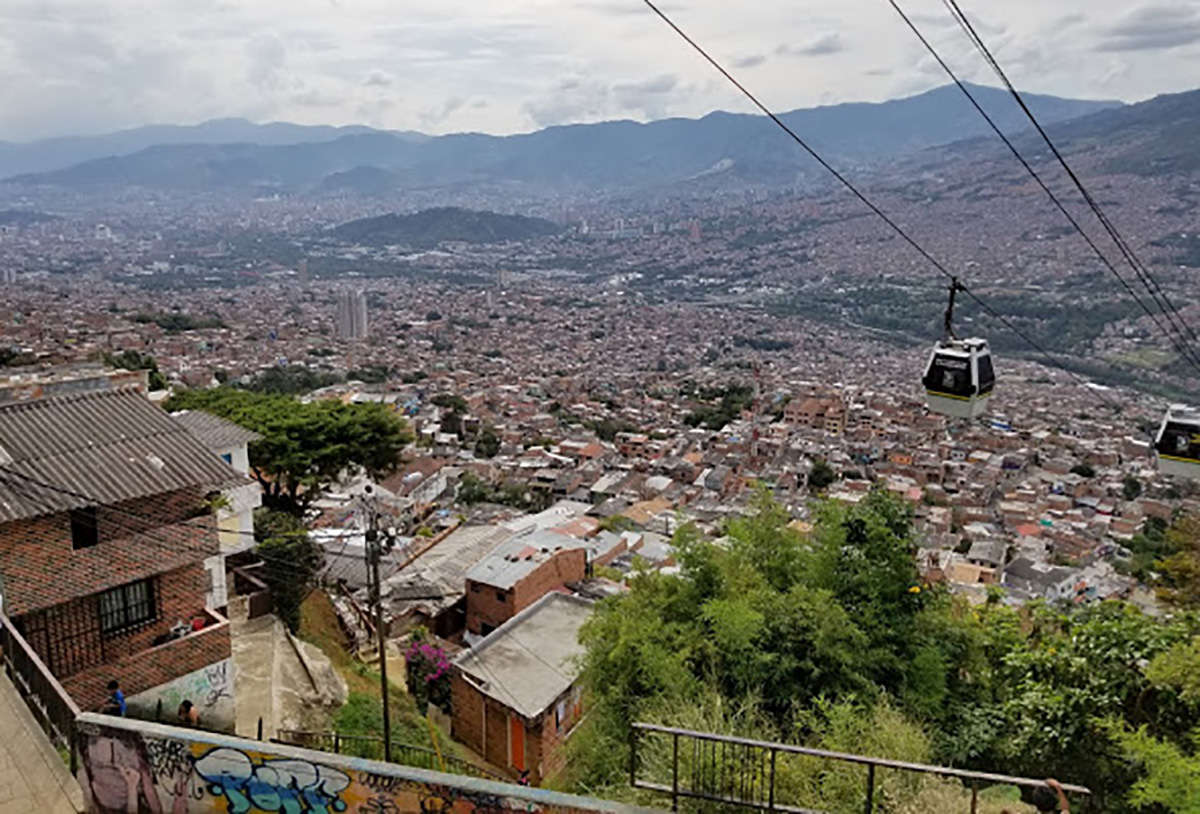 A spectacular
A spectacular 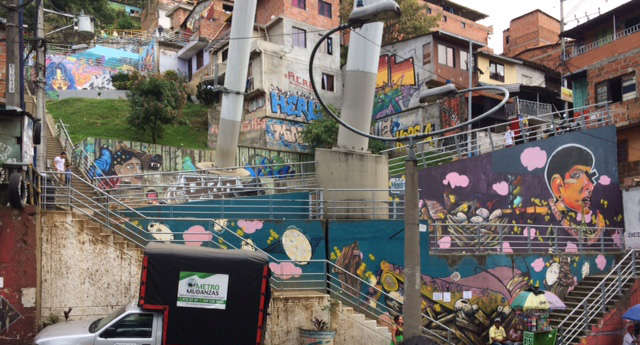 all interested in medicine,” we asked. “No, I’m going to study psychology,” another replied.
all interested in medicine,” we asked. “No, I’m going to study psychology,” another replied.
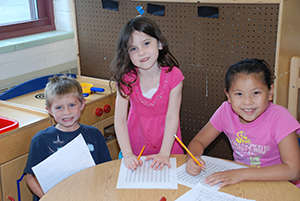
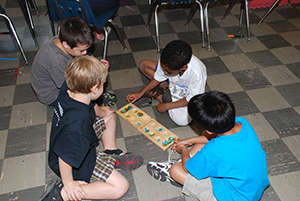
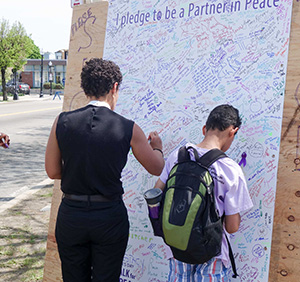
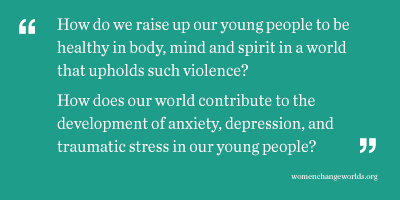 Although these are all big questions, I have at least learned a few things over the years through my
Although these are all big questions, I have at least learned a few things over the years through my 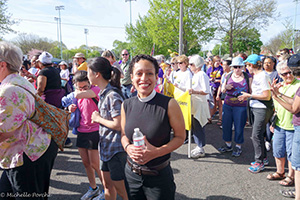 Lisa Fortuna
Lisa Fortuna
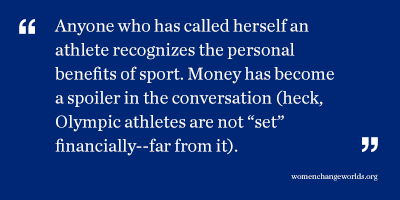 Championship, was confused when he arrived on campus. His
Championship, was confused when he arrived on campus. His 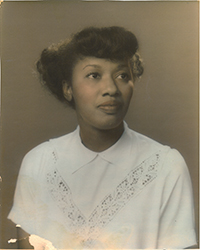
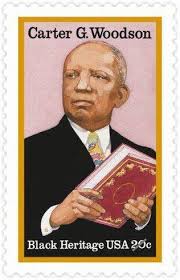 ck History Month, which began as Negro History Week in 1926. He was an erudite and meticulous scholar who obtained his B.Litt. from Berea College, his M.A. from the University of Chicago, and his doctorate from Harvard University at a time when the pursuit of higher education was extremely fraught for African Americans. Because he made it his mission to collect, compile, and distribute historical data about Black people in America, I like to call him “the original #BlackLivesMatter guy.” His self-declared dual mission was to make sure the African-Americans knew their history and to insure the place of Black history in mainstream U.S. history. This was long before Black history was considered relevant, even thinkable, by most white scholars and the white academy. In fact, he writes in the preface of The Negro in Our History that he penned the book for schoolteachers so that Black history could be taught in schools—and this, just in time for the opening of Washington High School.
ck History Month, which began as Negro History Week in 1926. He was an erudite and meticulous scholar who obtained his B.Litt. from Berea College, his M.A. from the University of Chicago, and his doctorate from Harvard University at a time when the pursuit of higher education was extremely fraught for African Americans. Because he made it his mission to collect, compile, and distribute historical data about Black people in America, I like to call him “the original #BlackLivesMatter guy.” His self-declared dual mission was to make sure the African-Americans knew their history and to insure the place of Black history in mainstream U.S. history. This was long before Black history was considered relevant, even thinkable, by most white scholars and the white academy. In fact, he writes in the preface of The Negro in Our History that he penned the book for schoolteachers so that Black history could be taught in schools—and this, just in time for the opening of Washington High School.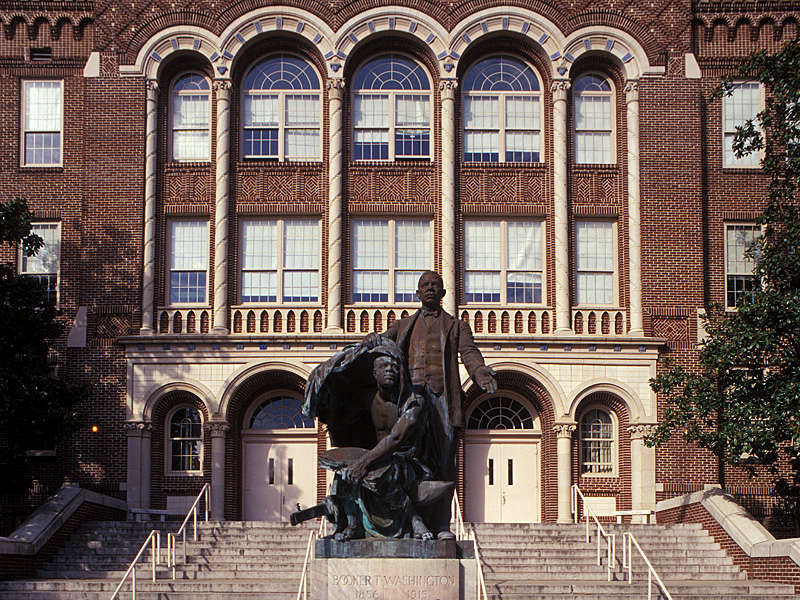 women. It enlivens my curiosity to imagine my grandmother Jannie as a young woman learning in school about her own history from Carter G. Woodson’s text, which, at that time was still relatively new, alongside anything else she might have been learning. It saddens me to reflect on the fact that my own post-desegregation high school education, AP History and all, offered no such in-depth overview of Black history, African American or African.
women. It enlivens my curiosity to imagine my grandmother Jannie as a young woman learning in school about her own history from Carter G. Woodson’s text, which, at that time was still relatively new, alongside anything else she might have been learning. It saddens me to reflect on the fact that my own post-desegregation high school education, AP History and all, offered no such in-depth overview of Black history, African American or African.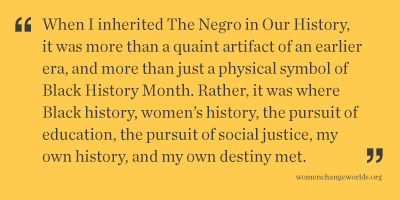 After finishing high school, my grandmother Jannie, like many of her generation, worked as a domestic for many years. However, after spending time working in the home of a doctor, she was encouraged and went on to become a licensed practical nurse (LPN), which took two more years of night school. From that point until her death, she worked as a private nurse to aging wealthy Atlantans. This enabled her to make a good, albeit humble, livelihood for herself and her two daughters, along with my great grandmother Laura, who lived with her and served as her primary source of childcare, particularly after her brief marriage to my grandfather, an older man who she found to be overbearing, ended. With this livelihood, she was able to put both her daughters through Spelman College, the nation’s leading African American women’s college, then and now. It stands as a point of pride to our whole family that, although she was unable to attend due to family responsibilities, Jannie herself was also at one time admitted to
After finishing high school, my grandmother Jannie, like many of her generation, worked as a domestic for many years. However, after spending time working in the home of a doctor, she was encouraged and went on to become a licensed practical nurse (LPN), which took two more years of night school. From that point until her death, she worked as a private nurse to aging wealthy Atlantans. This enabled her to make a good, albeit humble, livelihood for herself and her two daughters, along with my great grandmother Laura, who lived with her and served as her primary source of childcare, particularly after her brief marriage to my grandfather, an older man who she found to be overbearing, ended. With this livelihood, she was able to put both her daughters through Spelman College, the nation’s leading African American women’s college, then and now. It stands as a point of pride to our whole family that, although she was unable to attend due to family responsibilities, Jannie herself was also at one time admitted to 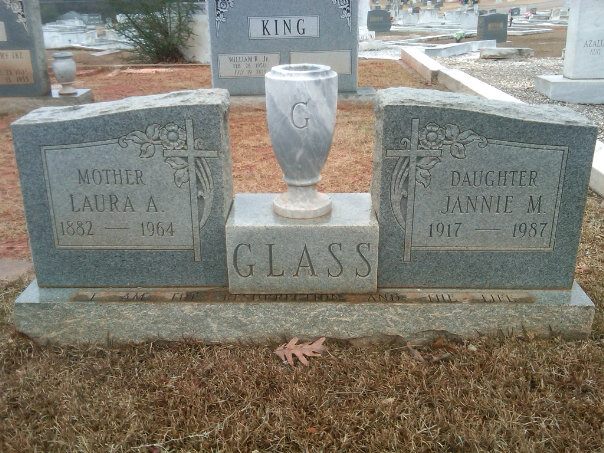 ge. Sadly, she didn’t live to see me attain my Ph.D., but, when she passed away, I was already pursuing my Masters degree, and, like her, I was also mother to a second child. Thus, when I inherited The Negro in Our History, it was more than a quaint artifact of an earlier era, and more than just a physical symbol of Black History Month. Rather, it was where Black history, women’s history, the pursuit of education, the pursuit of social justice, my own history, and my own destiny met.
ge. Sadly, she didn’t live to see me attain my Ph.D., but, when she passed away, I was already pursuing my Masters degree, and, like her, I was also mother to a second child. Thus, when I inherited The Negro in Our History, it was more than a quaint artifact of an earlier era, and more than just a physical symbol of Black History Month. Rather, it was where Black history, women’s history, the pursuit of education, the pursuit of social justice, my own history, and my own destiny met.
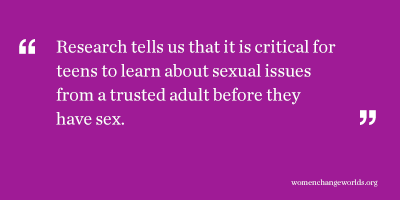 It’s important to talk with teens before they have sex. Research tells us that it is critical for teens to learn about sexual issues from a trusted adult before they have sex.
It’s important to talk with teens before they have sex. Research tells us that it is critical for teens to learn about sexual issues from a trusted adult before they have sex.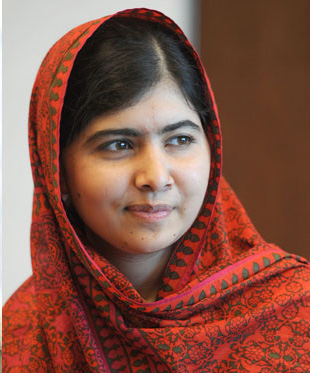
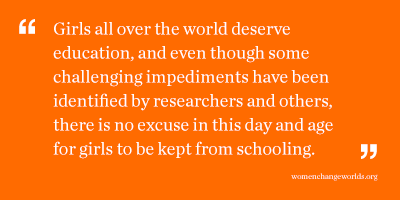 capital. It was witnessing homelessness in her city that inspired her to figure out how she and her family could make a real difference, and her “power of half” principle has since become a movement.
capital. It was witnessing homelessness in her city that inspired her to figure out how she and her family could make a real difference, and her “power of half” principle has since become a movement.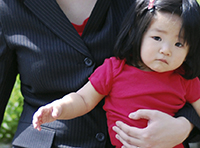
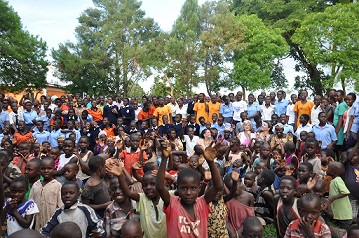
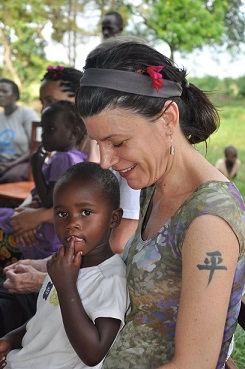 Jen Dirga
Jen Dirga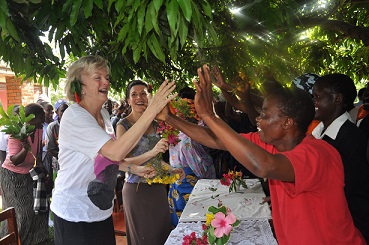 Sallie Dunning
Sallie Dunning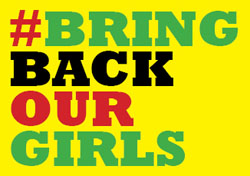
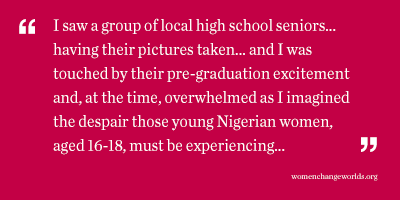

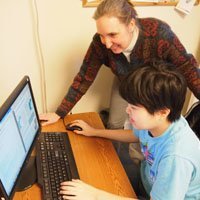
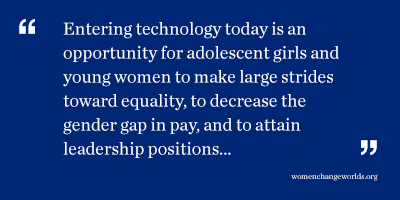 In my hometown, I see evidence that women are emerging as confident, enthusiastic leaders of technology. Recently, I was at a public meeting for a community group planning the inaugural
In my hometown, I see evidence that women are emerging as confident, enthusiastic leaders of technology. Recently, I was at a public meeting for a community group planning the inaugural 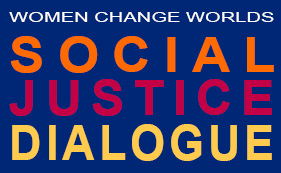 Social Justice Dialogue: Leadership for Social Change
Social Justice Dialogue: Leadership for Social Change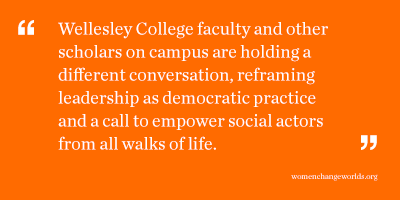 Second, the PPLA explores ways to do teaching and research that is driven by our values. We focus on the kinds of leadership and collective capacity we need to meet the common challenges our society face in a just way. We insist upon rigor and methodological soundness in our work, but we cannot separate moral and ethical considerations from our research and writing. Many scholars believe that our values suffuse our classrooms, laboratories, articles, and books whether we recognize and foreground them or not. The Project on Public Leadership seeks ways to affirm and support explicitly values-driven work.
Second, the PPLA explores ways to do teaching and research that is driven by our values. We focus on the kinds of leadership and collective capacity we need to meet the common challenges our society face in a just way. We insist upon rigor and methodological soundness in our work, but we cannot separate moral and ethical considerations from our research and writing. Many scholars believe that our values suffuse our classrooms, laboratories, articles, and books whether we recognize and foreground them or not. The Project on Public Leadership seeks ways to affirm and support explicitly values-driven work.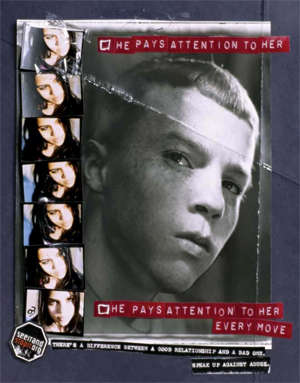
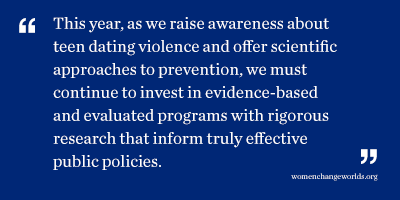 s a precursor to teen dating violence. Schools—where most young people meet, hang out, and develop patterns of social interactions—may be training grounds for domestic violence because behaviors conducted in public may provide license to proceed in private.
s a precursor to teen dating violence. Schools—where most young people meet, hang out, and develop patterns of social interactions—may be training grounds for domestic violence because behaviors conducted in public may provide license to proceed in private.
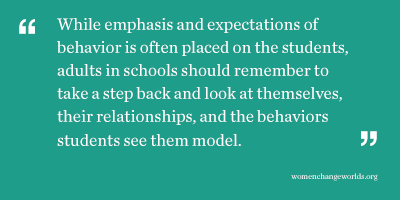 Students are always watching. They are watching adults at their best and they are particularly watching adults when they are in conflict. While emphasis and expectations of behavior is often placed on the students, adults in schools should remember to take a step back and look at themselves, their relationships, and the behaviors students see them model. It’s imperative that adult communities in schools reflect the same expectations of behavior that we have for students. Otherwise a climate may develop where students and adults may not feel safe to identify, report, and effectively address bullying behavior.
Students are always watching. They are watching adults at their best and they are particularly watching adults when they are in conflict. While emphasis and expectations of behavior is often placed on the students, adults in schools should remember to take a step back and look at themselves, their relationships, and the behaviors students see them model. It’s imperative that adult communities in schools reflect the same expectations of behavior that we have for students. Otherwise a climate may develop where students and adults may not feel safe to identify, report, and effectively address bullying behavior.
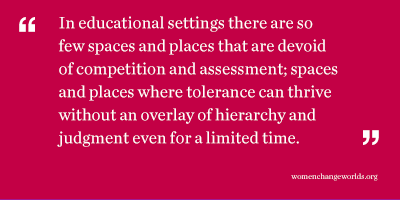 All day I wondered how the class had responded to the film. I was worried, but the description of the discussion surpassed my expectations. I called the teacher to thank her. She said that they had been working on stereotypes and biases for several weeks but it wasn’t until kids who were classmates talked about their own experience that opinions and attitudes shifted. This was before standardized testing and she was a brilliant teacher who made time for this important discussion. I know there are many brilliant teachers who could create spaces for tolerance in their classrooms if given some tools and language to guide them.
All day I wondered how the class had responded to the film. I was worried, but the description of the discussion surpassed my expectations. I called the teacher to thank her. She said that they had been working on stereotypes and biases for several weeks but it wasn’t until kids who were classmates talked about their own experience that opinions and attitudes shifted. This was before standardized testing and she was a brilliant teacher who made time for this important discussion. I know there are many brilliant teachers who could create spaces for tolerance in their classrooms if given some tools and language to guide them.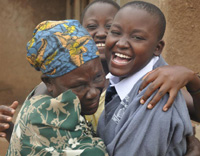 Social Justice Dialogue: Eradicating Poverty
Social Justice Dialogue: Eradicating Poverty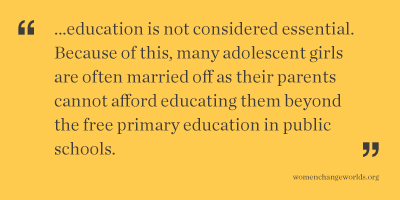 I was fortunate, however, that my parents were not desperate for the bride price when I was a growing up. I could have been sold for a cow or a goat. Instead, at age 14, when I was feeling hopeless and working as a barmaid, a wonderful family in Kentucky (who knew one of my cousins from when they had done missionary work years earlier) enabled my return to school by paying my school fees for five years. I went on to earn my college degree before working with organizations that were striving to improve the lives of poor families in Africa.
I was fortunate, however, that my parents were not desperate for the bride price when I was a growing up. I could have been sold for a cow or a goat. Instead, at age 14, when I was feeling hopeless and working as a barmaid, a wonderful family in Kentucky (who knew one of my cousins from when they had done missionary work years earlier) enabled my return to school by paying my school fees for five years. I went on to earn my college degree before working with organizations that were striving to improve the lives of poor families in Africa.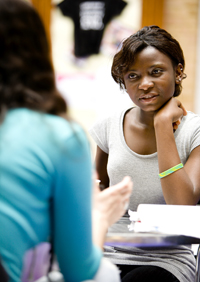 Social Justice Dialogue:
Social Justice Dialogue: 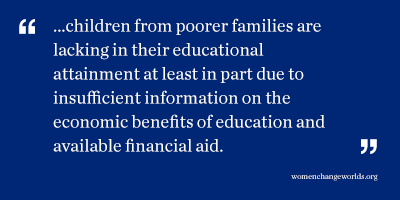 Eric Bettinger and his colleagues
Eric Bettinger and his colleagues
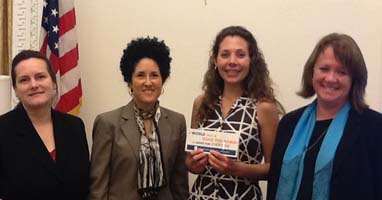 During the flight home, as I reviewed the day’s
During the flight home, as I reviewed the day’s 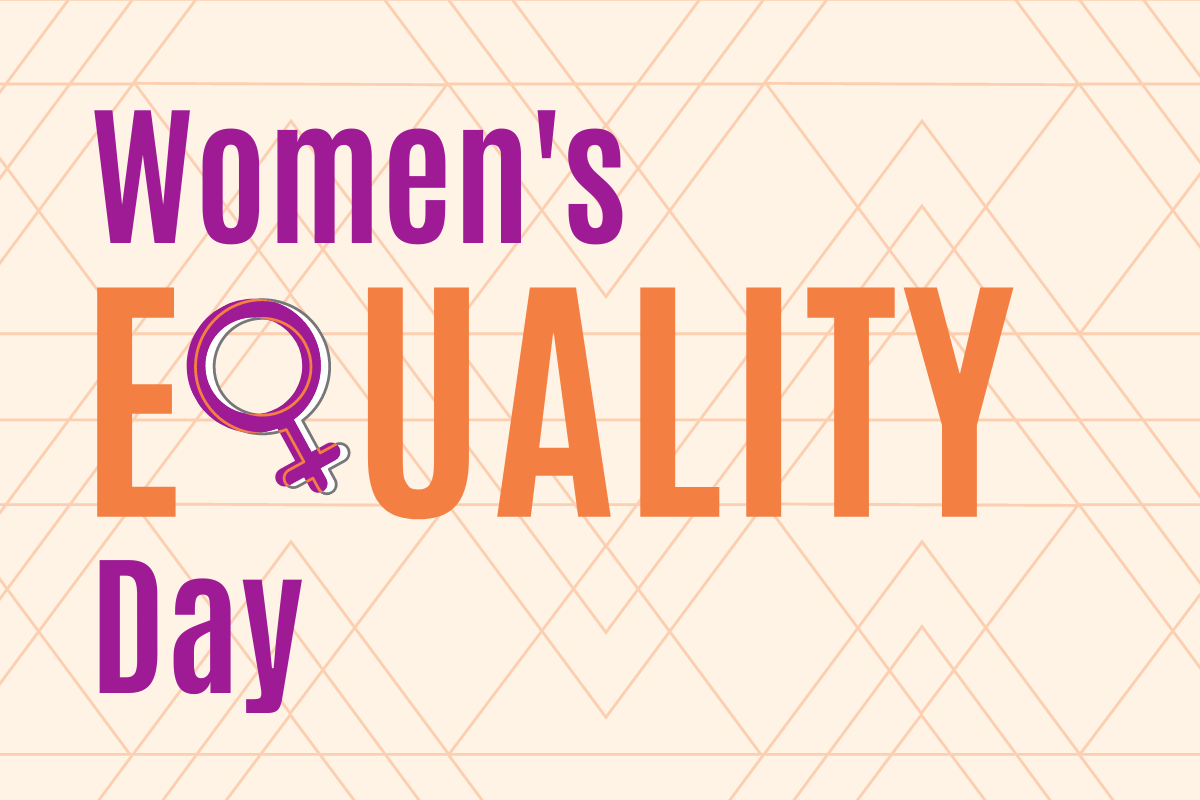

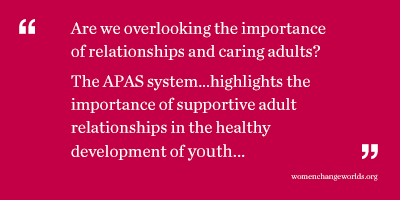 According to Benard, “we are all born with innate resiliency, with the capacity to develop the traits commonly found in resilient survivors: social competence (responsiveness, cultural flexibility, empathy, caring, communication skills, and a sense of humor); problem-solving (planning, help-seeking, critical and creative thinking); autonomy (sense of identity, self-efficacy, self-awareness, task-mastery, and adaptive distancing from negative messages and conditions); and a sense of purpose and belief in a bright future (goal direction, educational aspirations, optimism, faith, and spiritual connectedness)” (Benard, 1991).
According to Benard, “we are all born with innate resiliency, with the capacity to develop the traits commonly found in resilient survivors: social competence (responsiveness, cultural flexibility, empathy, caring, communication skills, and a sense of humor); problem-solving (planning, help-seeking, critical and creative thinking); autonomy (sense of identity, self-efficacy, self-awareness, task-mastery, and adaptive distancing from negative messages and conditions); and a sense of purpose and belief in a bright future (goal direction, educational aspirations, optimism, faith, and spiritual connectedness)” (Benard, 1991).
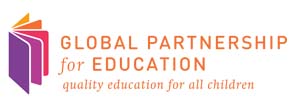

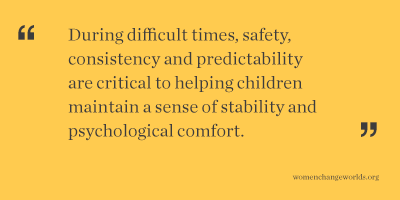 prone to anxious feelings or those with their own trauma history can be triggered by another traumatic event, even if it did not directly happen to them. In addition to the positive, supportive classroom climate and the social and emotional learning tools that Open Circle provides, some students may need additional time with a school psychologist or guidance counselor to help them manage their fears.
prone to anxious feelings or those with their own trauma history can be triggered by another traumatic event, even if it did not directly happen to them. In addition to the positive, supportive classroom climate and the social and emotional learning tools that Open Circle provides, some students may need additional time with a school psychologist or guidance counselor to help them manage their fears.